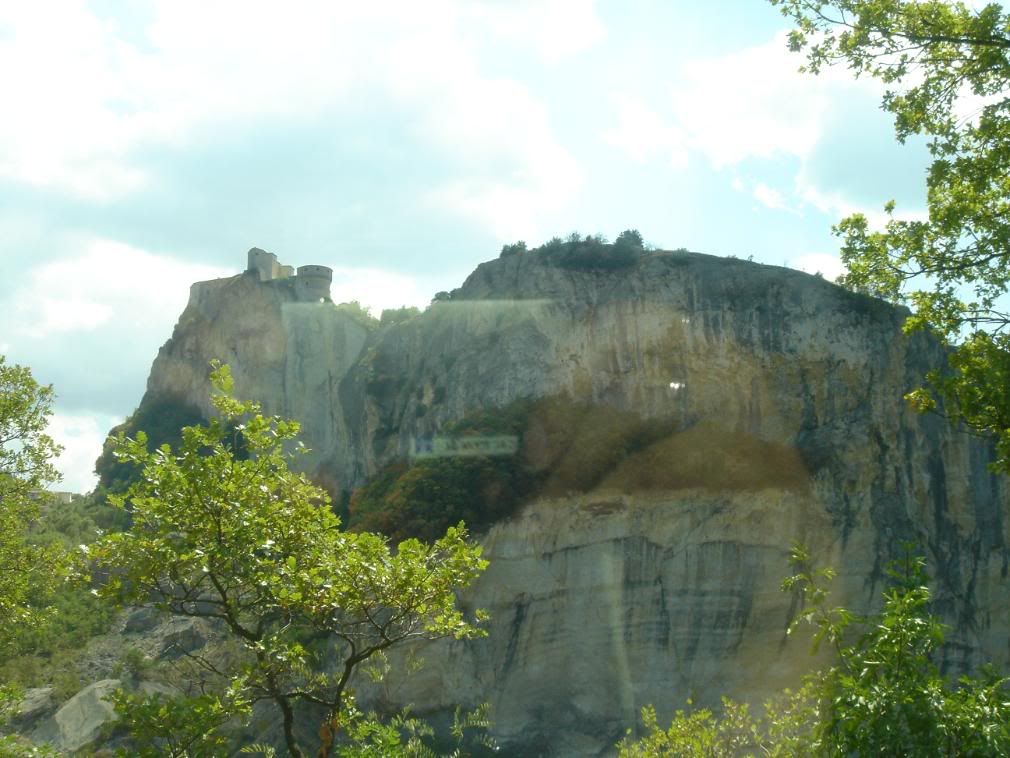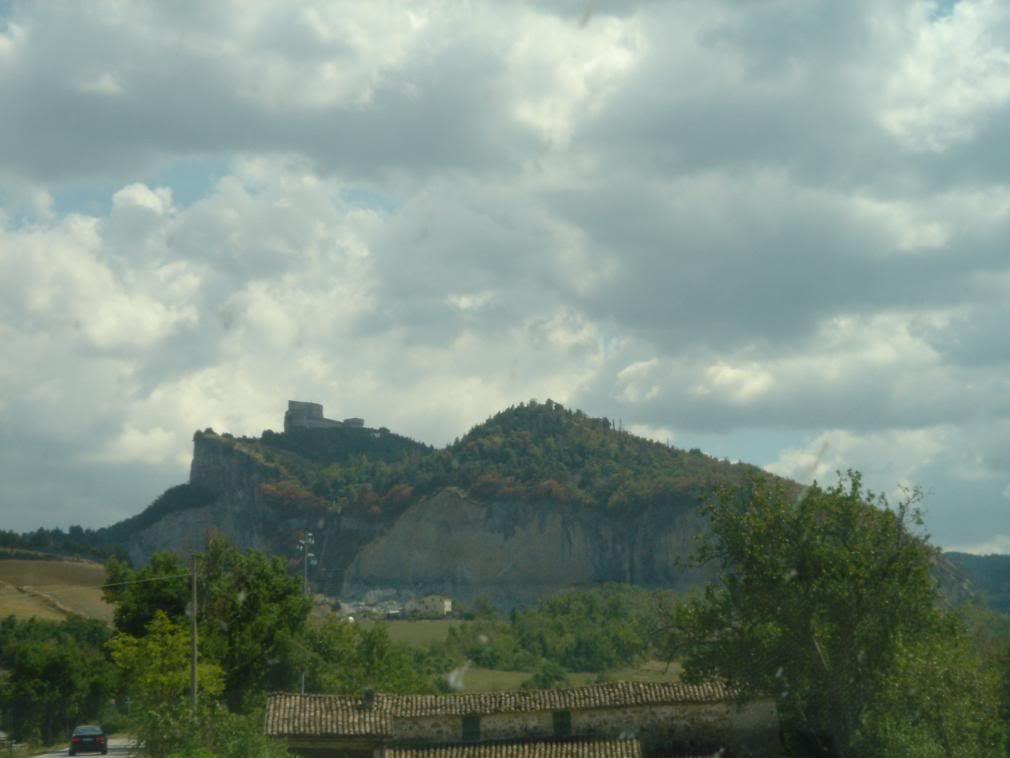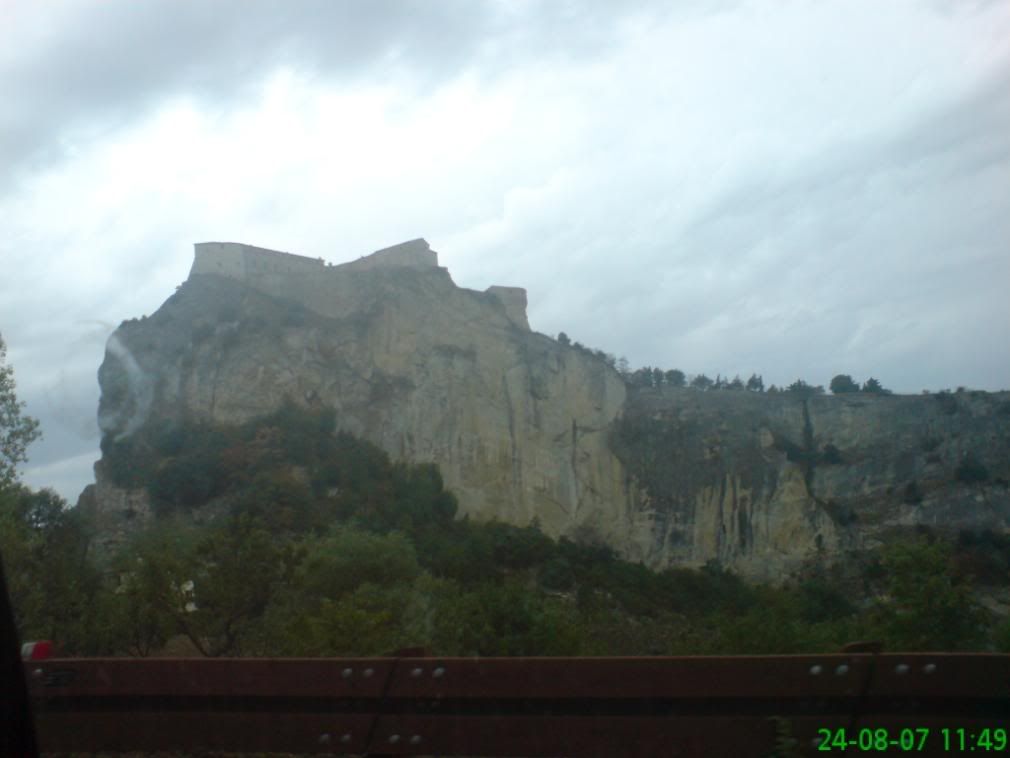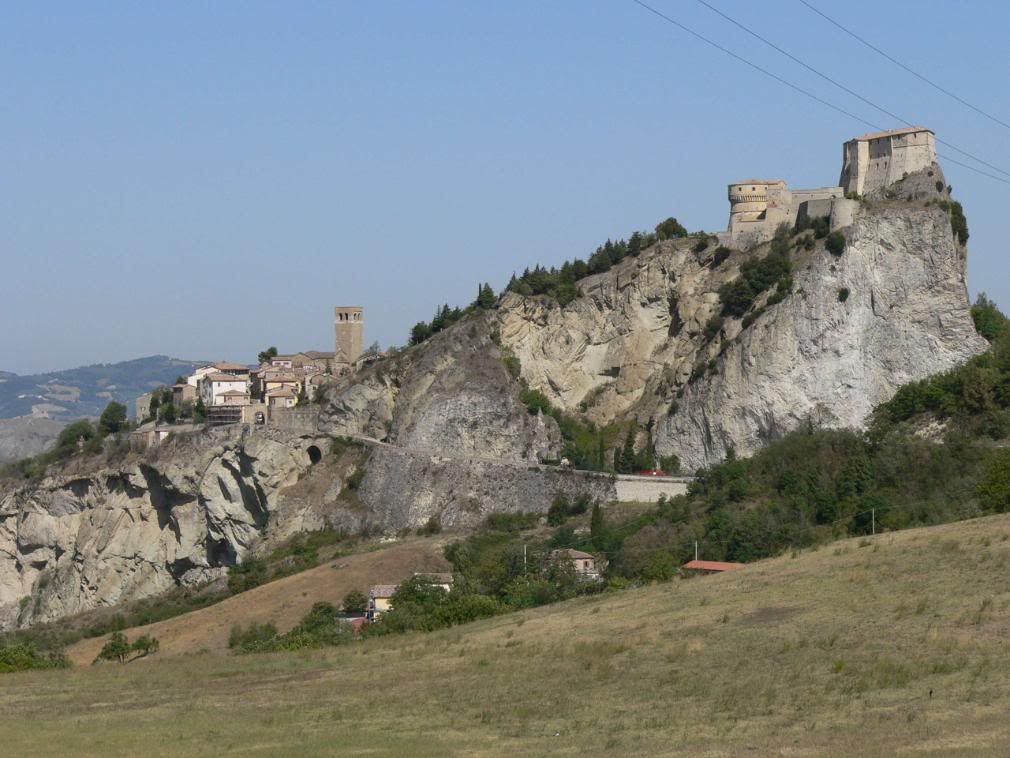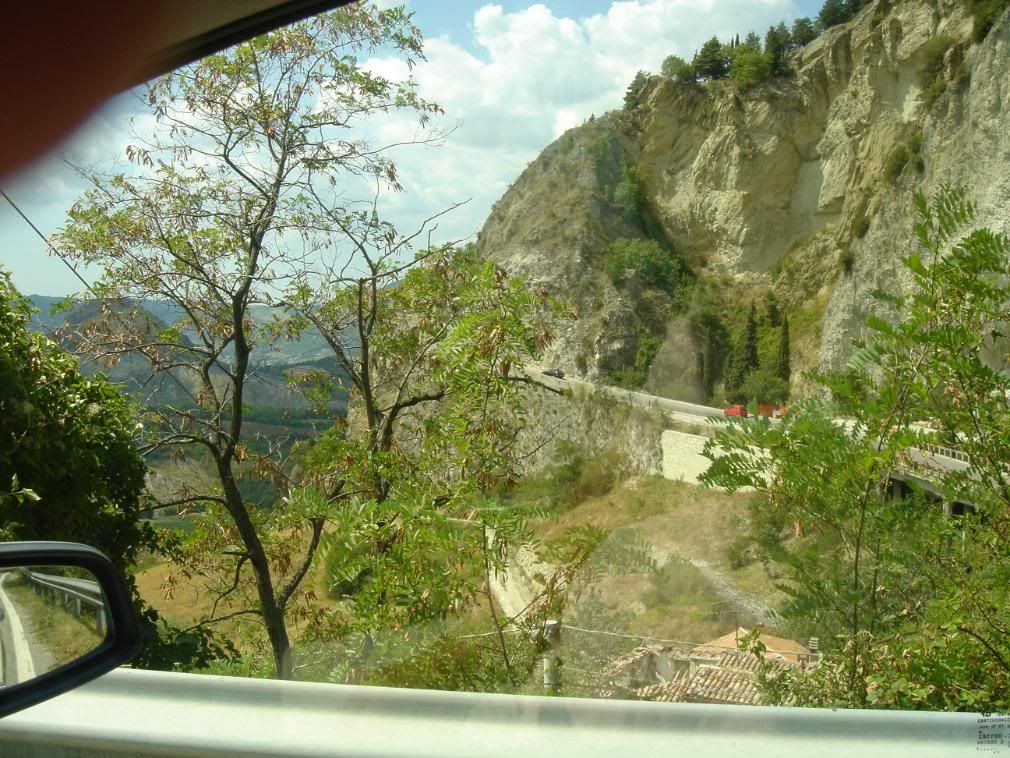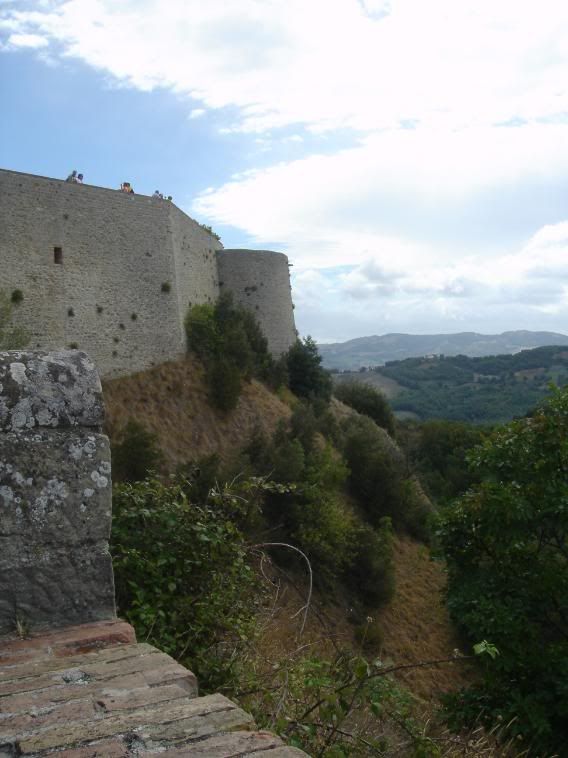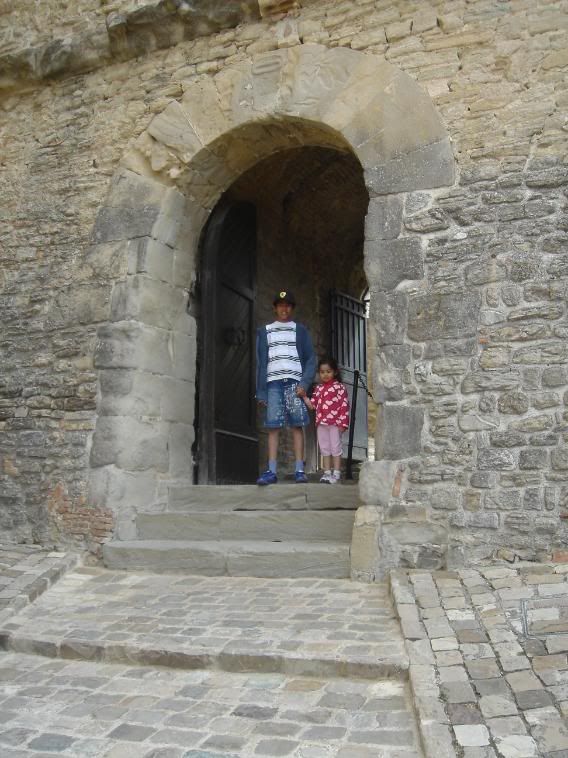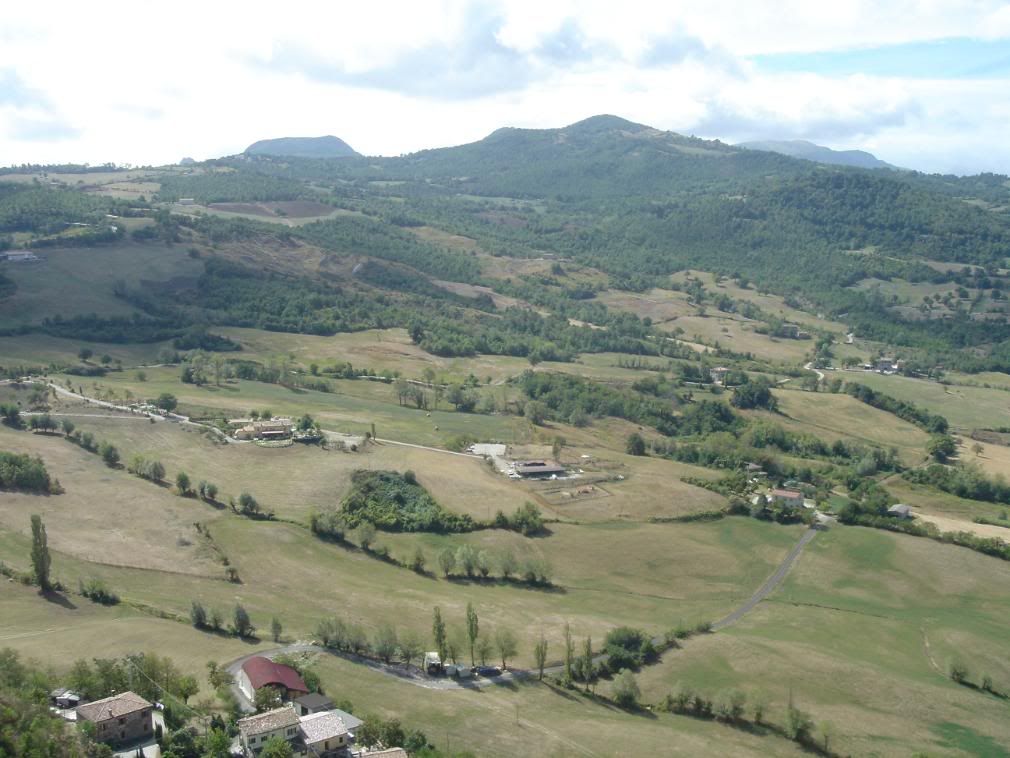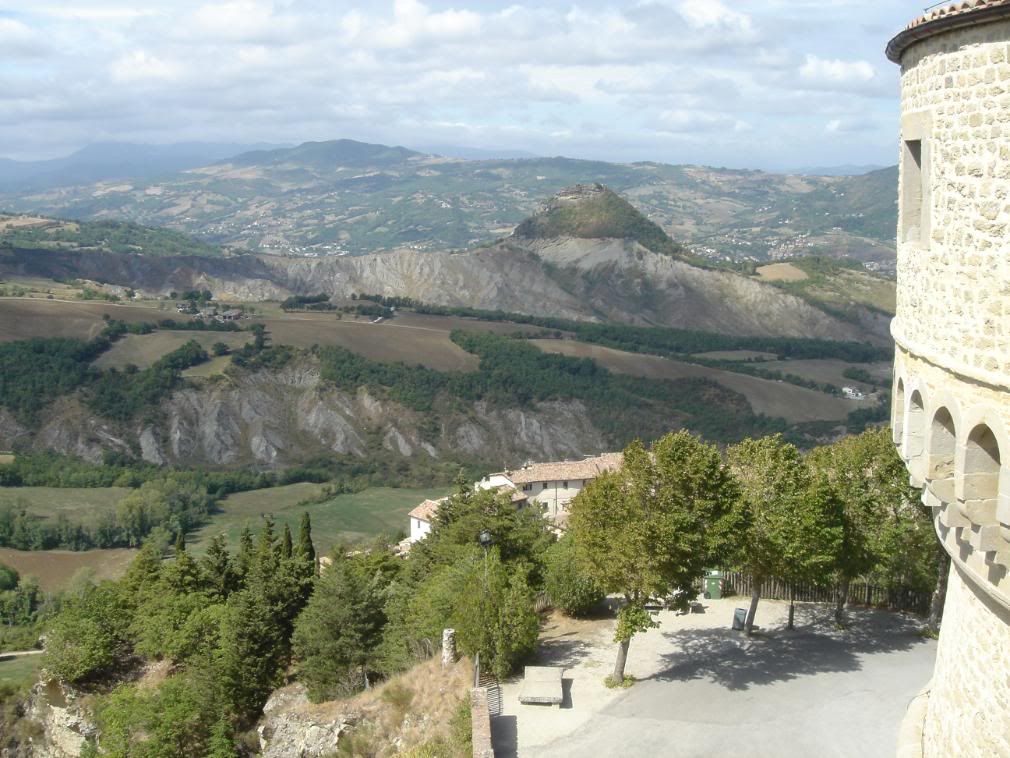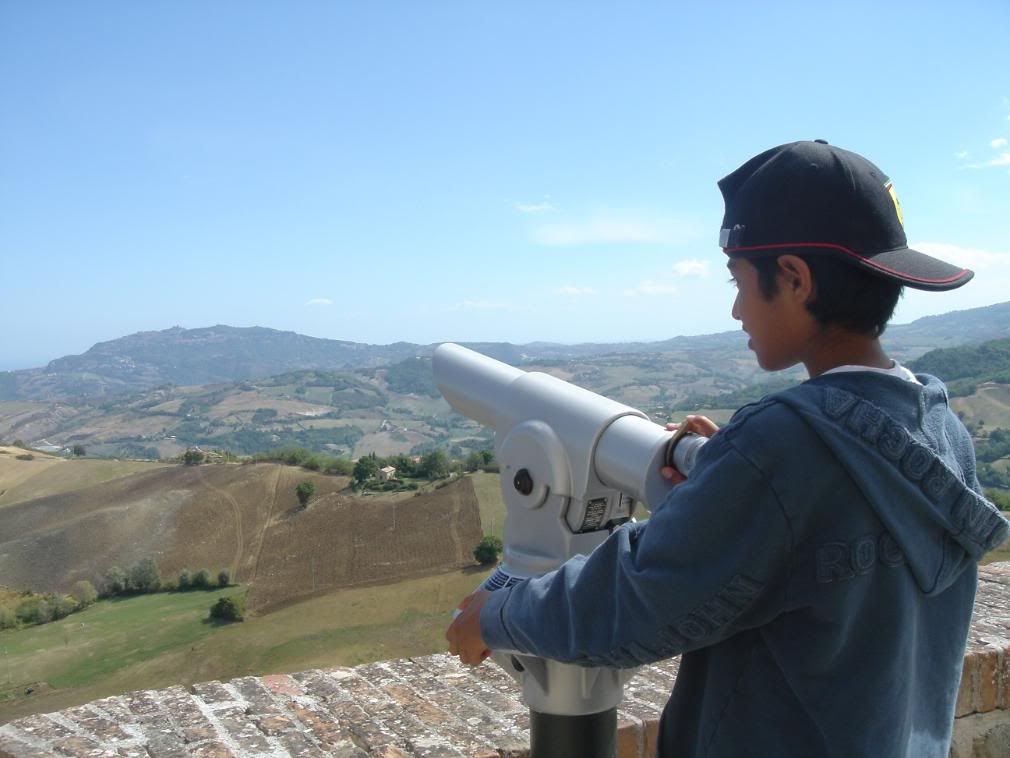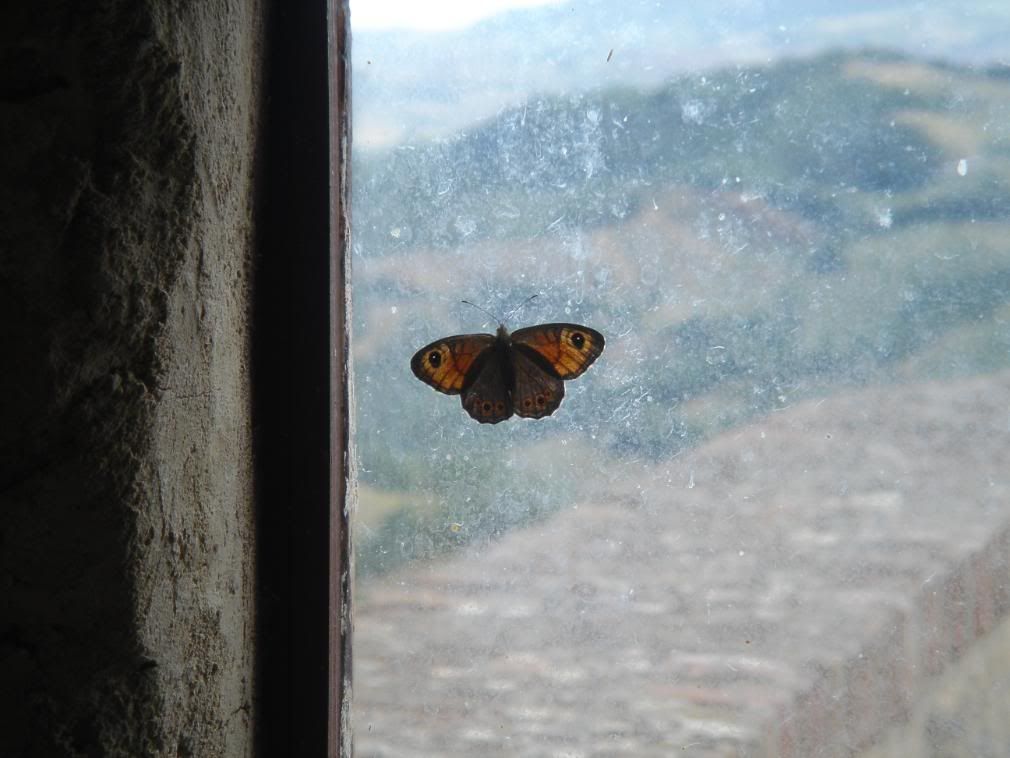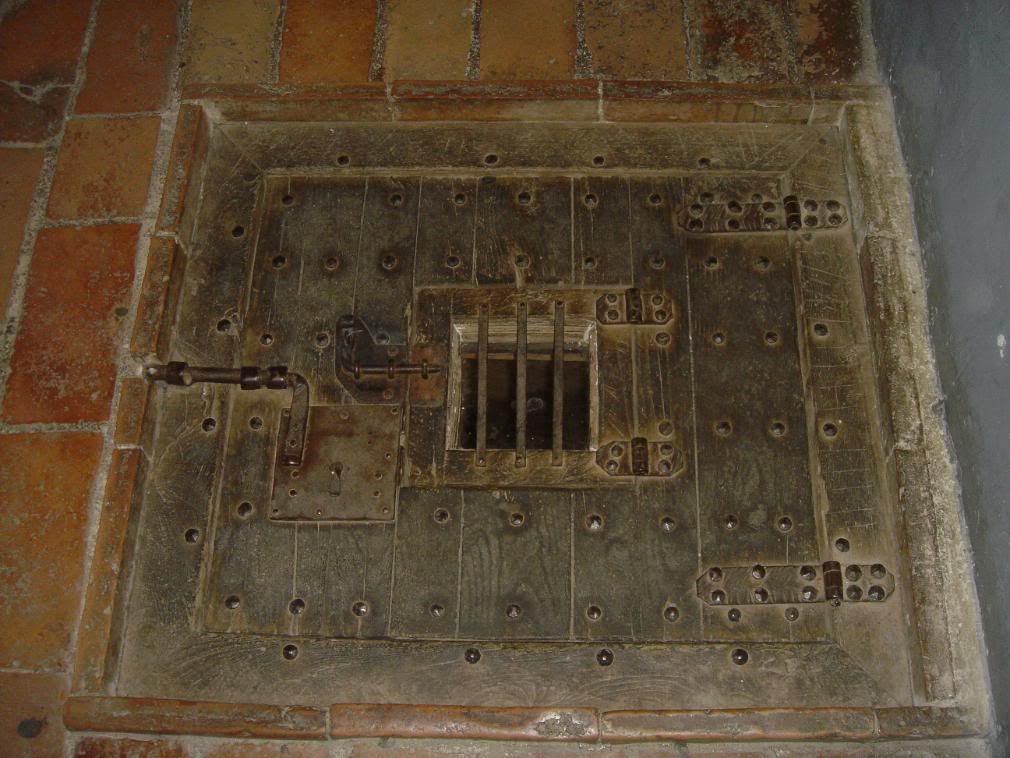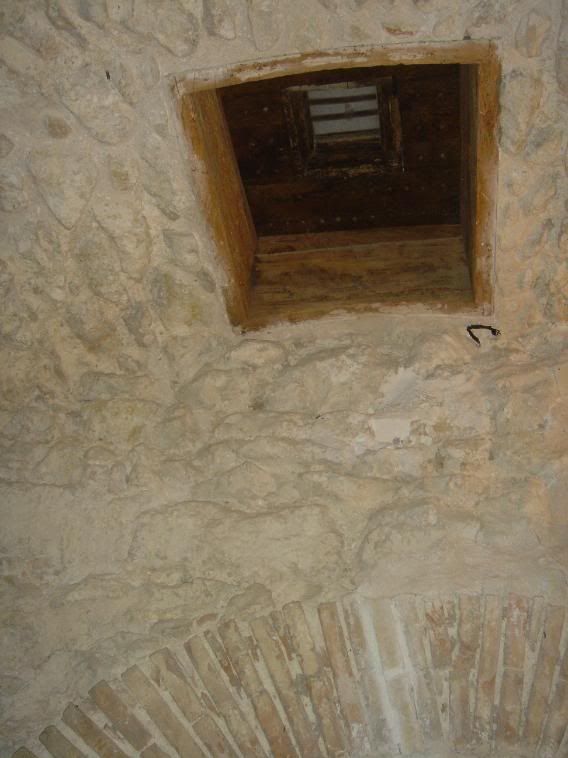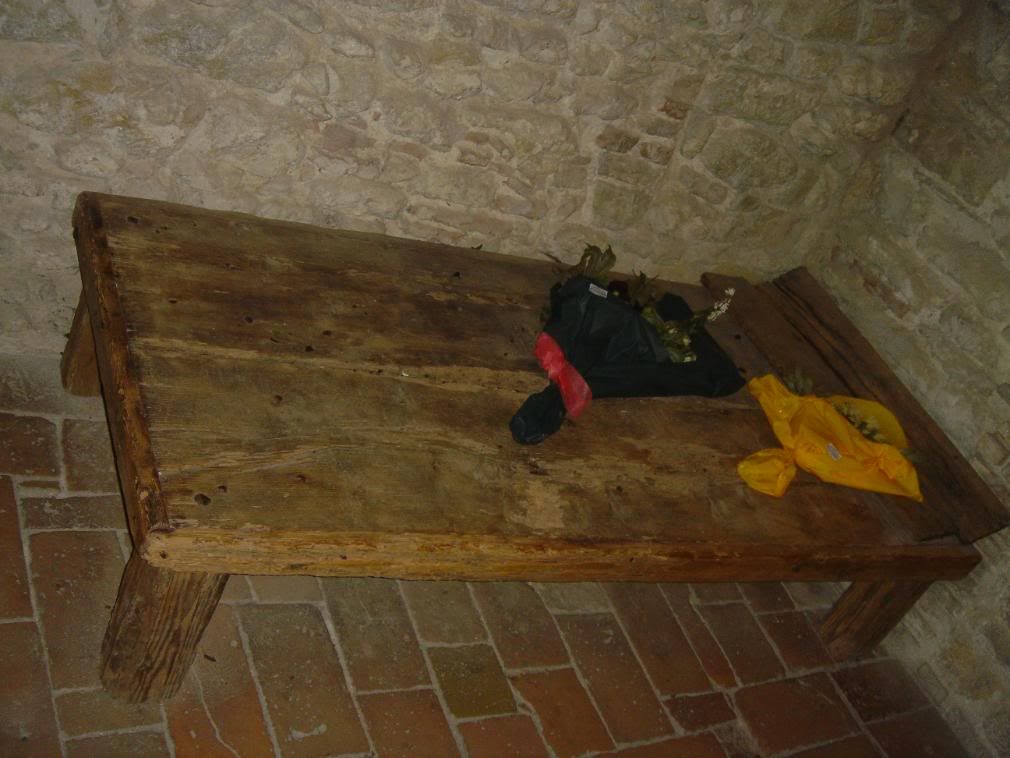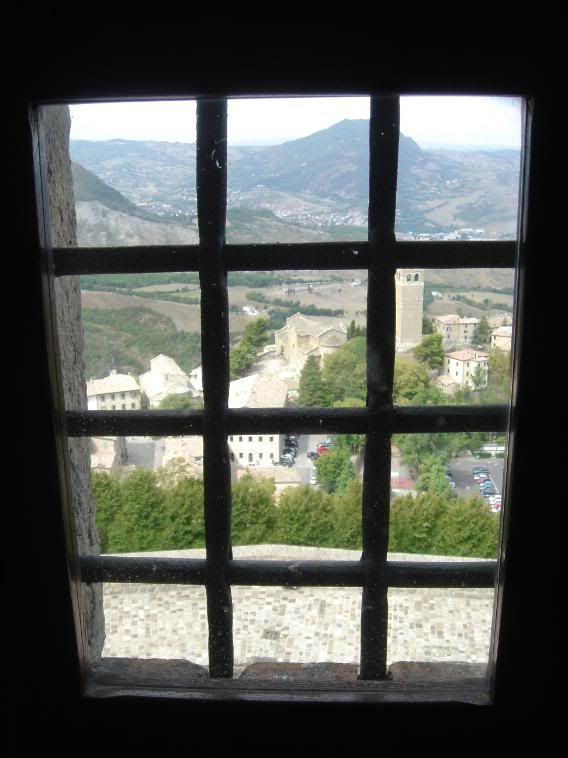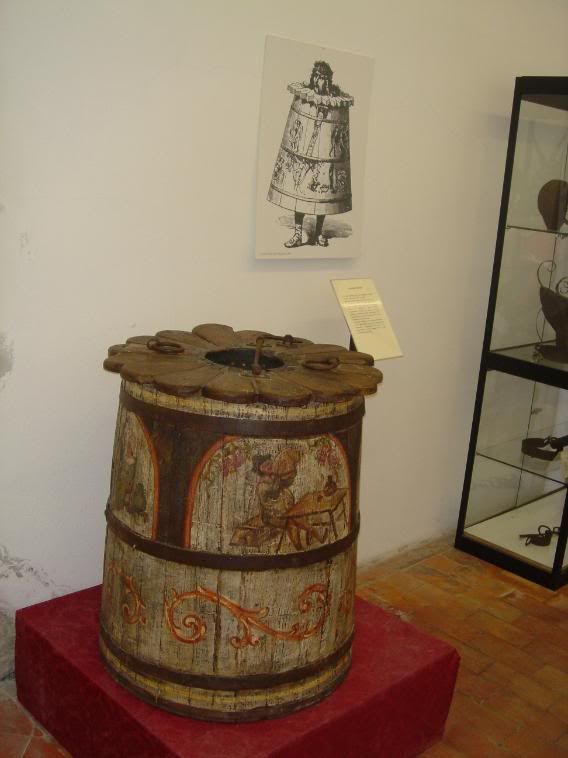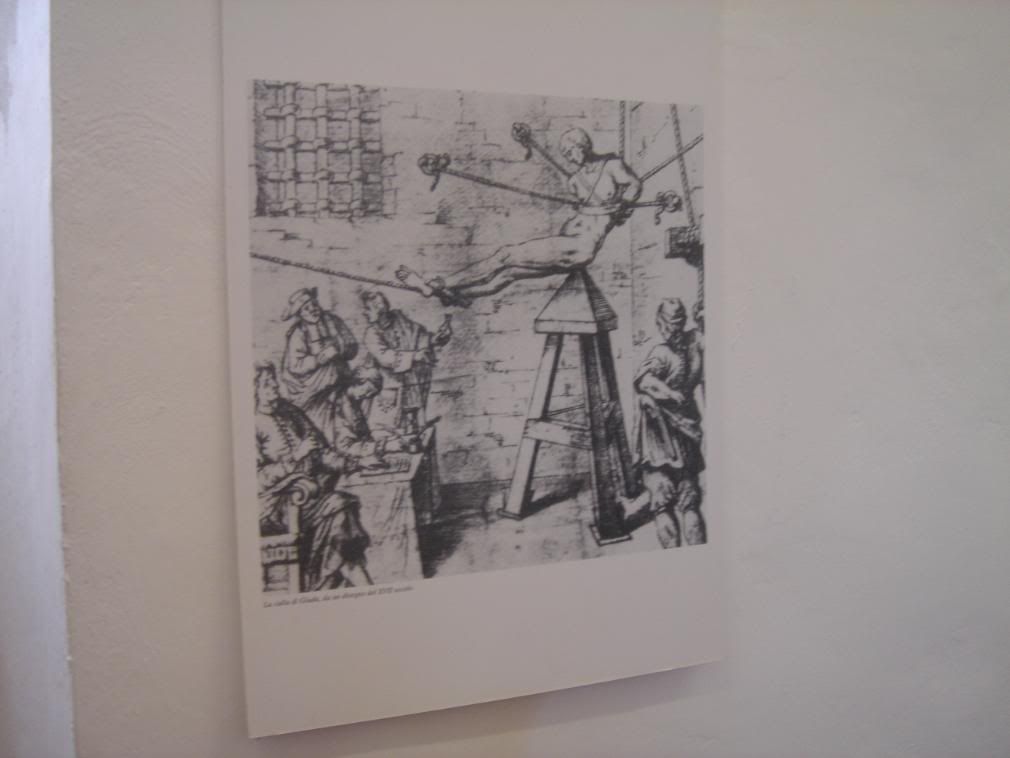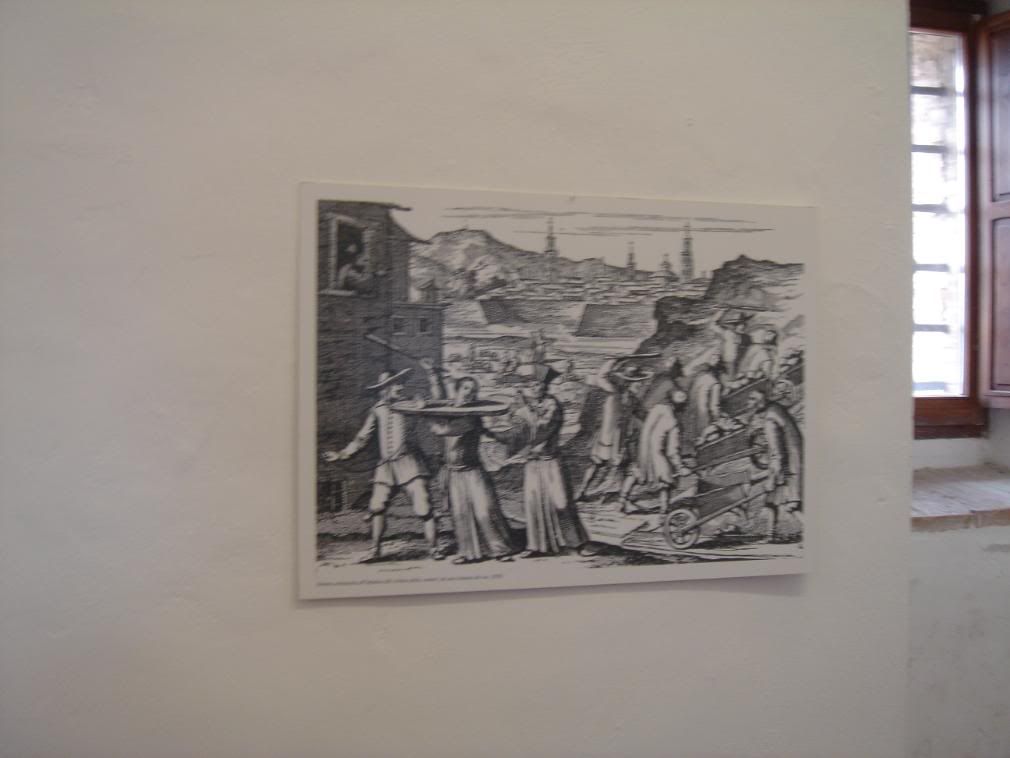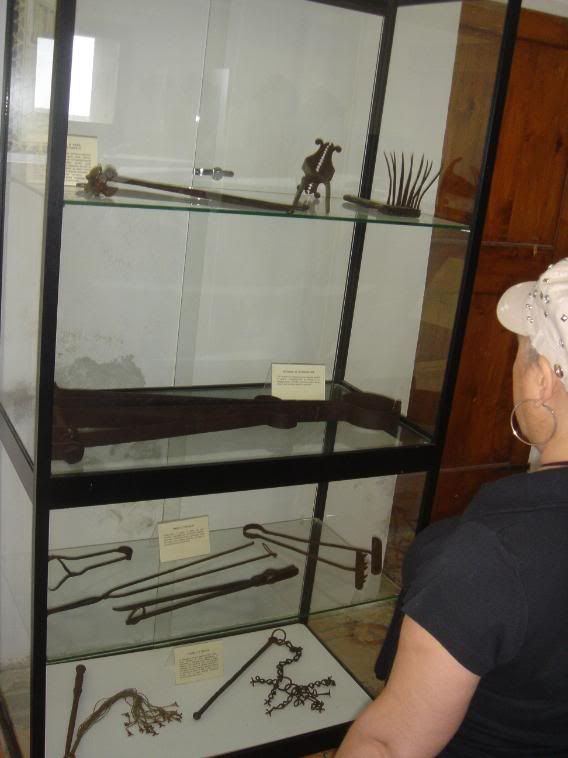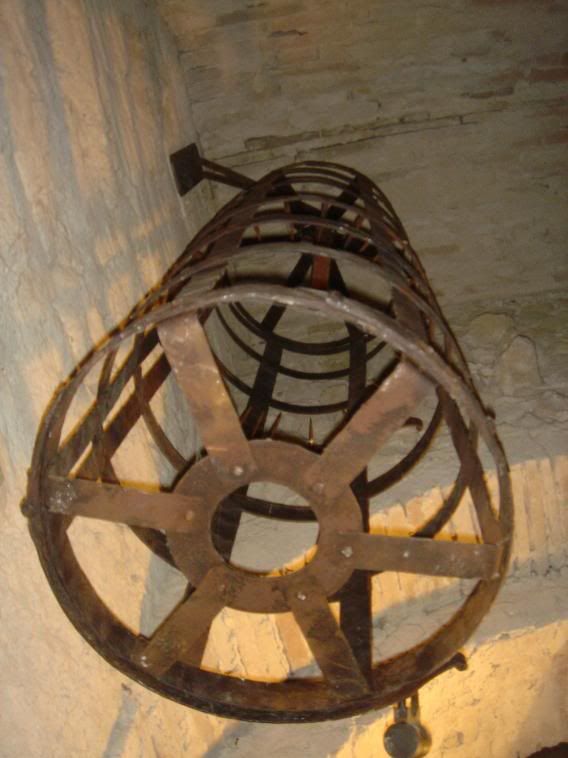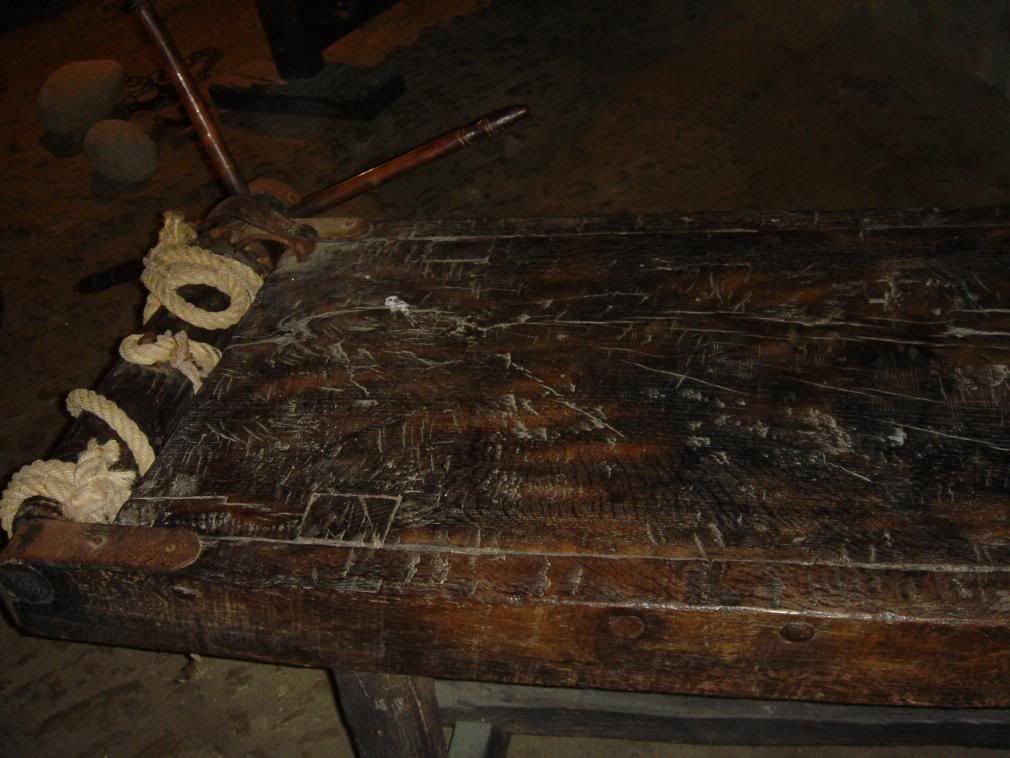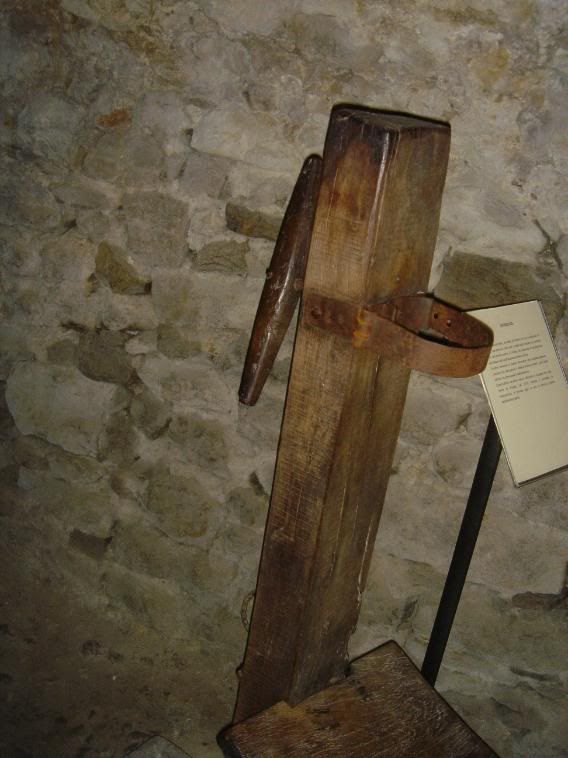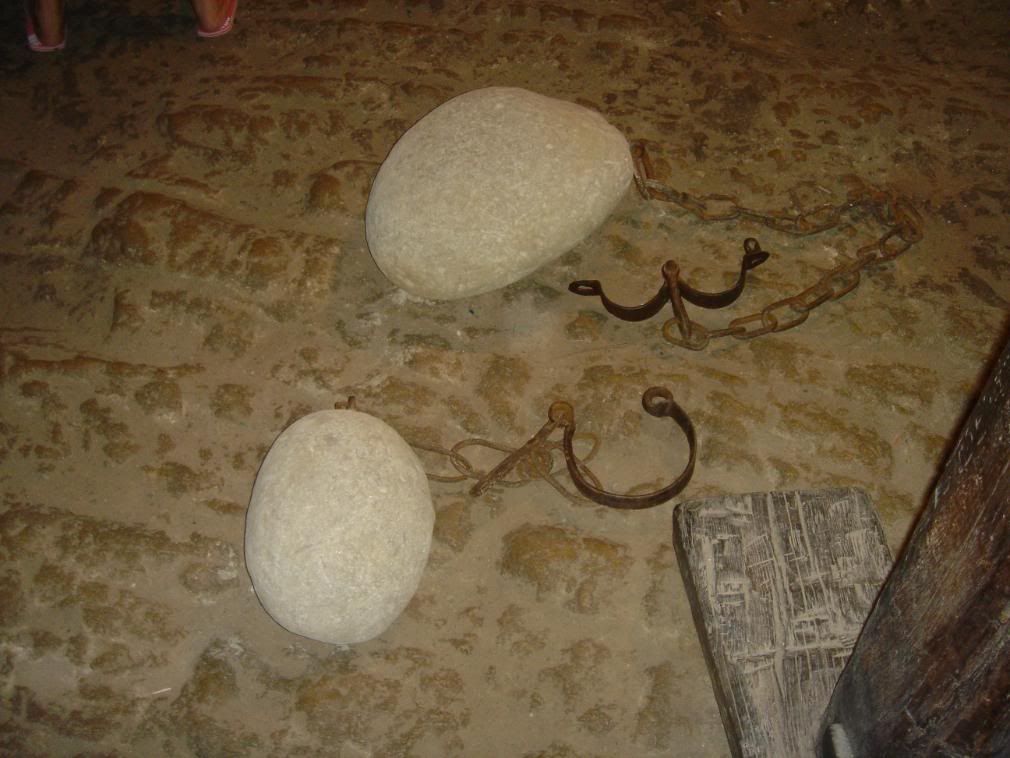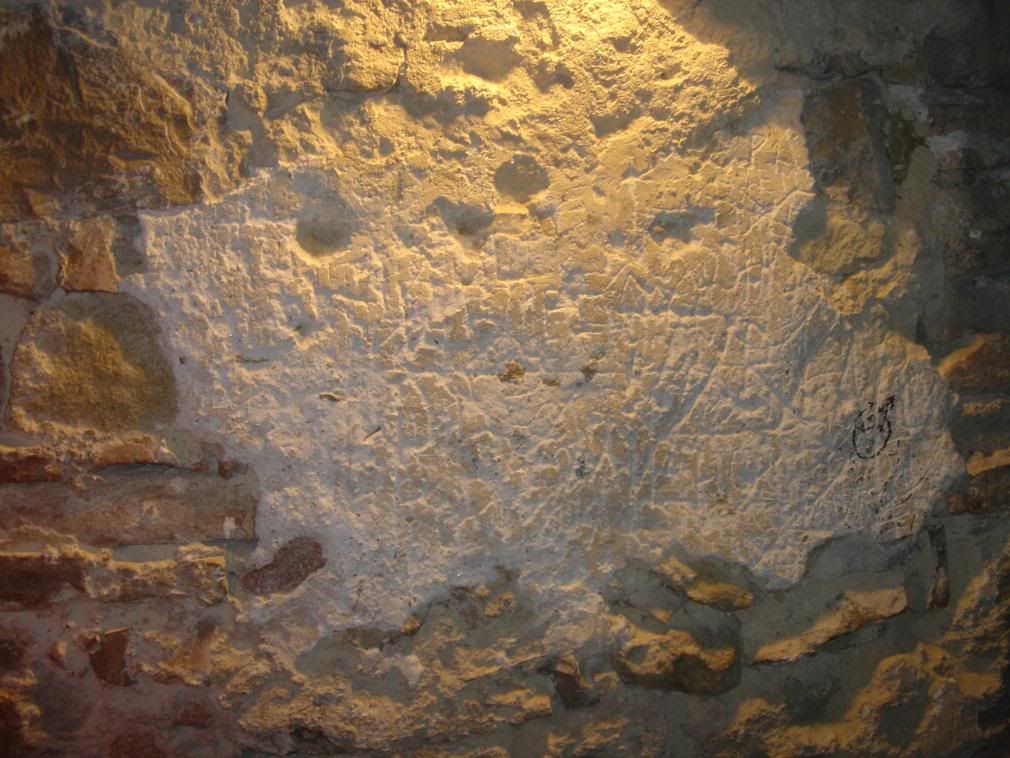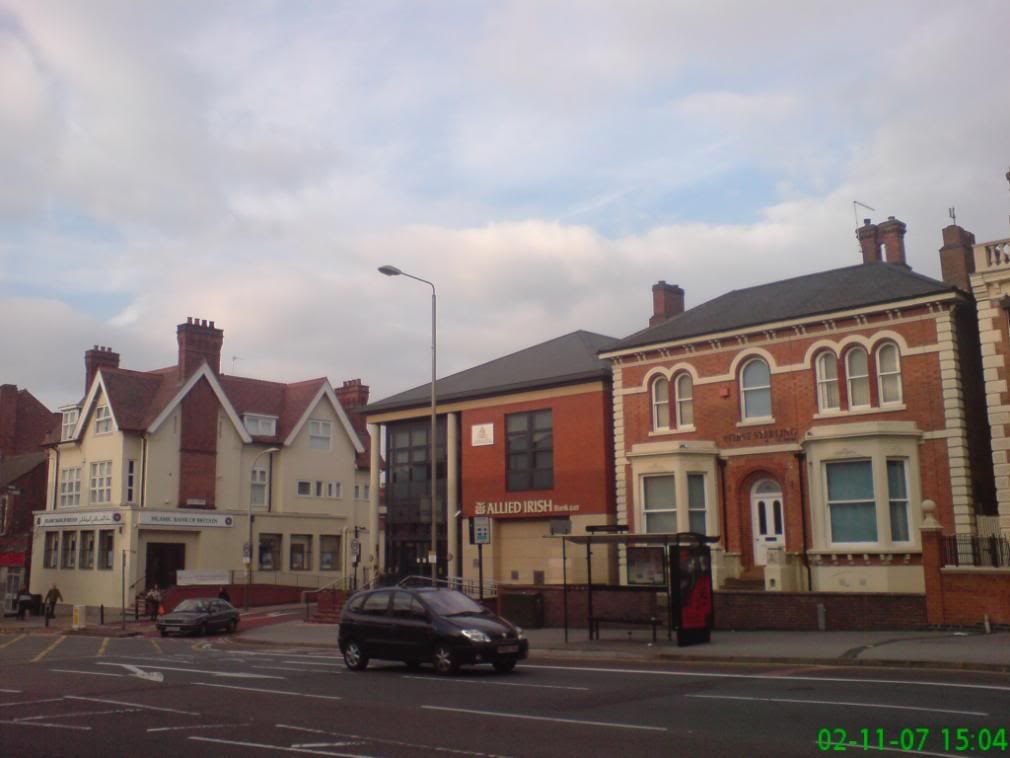An interesting email again from Yogi Sikand. And yet again, since there is no link, I have to paste the entire document in here. It is long but I believe very important for people interested in Muslim affairs to read this as Indian Muslims are perhaps one of the major poles of World Islam and what happens with them and what they do is perhaps equally important to what the Arab Muslims (broadly defined) do.
Read and ponder.
Indian Muslim Community Discourses: Continuities, Changes and Challenges
Yoginder Sikand
This paper is not a rigorously argued or academically-grounded presentation. Rather, it seeks to lay out some stray thoughts that come to the mind as I reflect on my involvement in writing about issues related to Muslims and inter-community relations in India over almost two decades.
This paper is divided into three broad sections. The first section deals with the ways in which the highly contentious notions of the ‘majority community’ or, simply, ‘the majority’, and the ‘minority communities’ have been constructed and have evolved historically in India. Here I look briefly at how these reflect specific agendas of well-entrenched social, economic and political elites, specifically Muslim and Hindu elites. I then turn to the specific case of the Indian Muslims, looking at how Indian Muslim organisations (often with claims, whether real or otherwise, to ‘All-India’ status) have articulated their concerns and demands on the state and on the wider Indian society, using the logic of ‘minority’ rights. I then look at the ways in which particular marginalised groups within the larger category defined as the ‘Indian Muslims’ (which itself can be regarded as marginalized as compared to what is defined as the Hindu ‘majority’) are beginning to stress their own identities and concerns as a means to press demands on the state and on the wider Muslim and Indian community. The concluding part of the paper briefly reflects on the ways in which the Government has responded to demands made by various Muslim groups and organizations that claim to represent them.
‘Hindu Majority’ and ‘Muslim Minority’: Are They Indeed Meaningful Categories?
A general and widely-held assumption is that India is a largely ‘Hindu’ country, that Hindus form the country’s ‘majority community’ and, consequently, that Hinduism is the religion of the ‘majority’ of the Indian people. Hence, non-Hindus are described as ‘minorities’ and the religions that they claim to follow are considered as ‘minority religions’. This, what is now ‘commonsensical’, assumption is reflected in most writings about India, in the country’s politics and by the Indian state. However, as numerous critics as well as social activists have pointed out (notwithstanding the fact that their pleas continue to fall on deaf ears), the assumption that Hindus are the ‘majority community’ in India and that Hinduism is the ‘majority religion’ is actually fallacious.
Numerous scholars have pointed out that what we understand as ‘Hinduism’ today is a relatively recent historical construct. There are no common or basic beliefs, dogmas and practices that can be said to be central to ‘Hinduism’. One can worship a million or more gods or none at all, regard the cow as divine or eat it, revere the Brahmins and mock the Dalits or the other way around, and still be considered a ‘Hindu’.
If textbook definitions of ‘Hinduism’ are regarded as the criteria to define what it really is, the beliefs and practices of a substantial proportion of Indians who are otherwise defined as ‘Hindus’ could hardly qualify to be part of ‘Hinduism’. If the Brahminical and neo-Hindu (Gandhian, Arya Samajist, etc.) definitions of ‘Hinduism’ are said to lay down what it is all about—such as belief in the divinity of the Vedas, the sanctity of the Varna system, belief in metempsychosis etc.—many people defined by the census as followers of ‘Hinduism’ can well be said to fall outside its pale. In other words, ‘Hinduism’ is not a single religion. Rather, it can be said to be a collection of religions, cults and traditions, some of which uphold beliefs and practices that others included in the broader ‘Hindu’ fold would find obnoxious or heretical, or, to say the least, greatly objectionable. Hence, to argue that ‘Hinduism’ is India’s ‘majority religion’ is fallacious, there being no clearly-defined and universally accepted empirical referent for the term.
If ‘Hinduism’ is thus an ‘imagined religion’, the associated notion of ‘the Hindu community’, too, is obviously misleading, and, indeed, meaningless. As Babasaheb Ambedkar mentioned in his critique of ‘Hinduism’, a community is a group of people united by a strong sense of we-feeling and brotherhood. This can hardly be said to be the case with the people who are arbitrarily defined as constituting the ‘Hindu community’, who are deeply divided among and against themselves, particularly on the basis of caste and ethnicity. The very edifice of the ‘Hindu’ social order is itself a complete antithesis of the strong ‘we-feeling’ that defines a community. Indian law implicitly admits this in defining the term ‘Hindu’negatively, rather than positively—as a group of people who are not something else, rather than as a group possessing certain attributes that they share in common. Hence, according to Indian law, a ‘Hindu’ is an Indian who is not a Parsi, a Muslim, a Christian or a Jew. It is merely enough to follow a religion, cult, sect or religious tradition that had its birth within the Indian subcontinent to be regarded as a ‘Hindu’ by Indian law, although the disparate groups that are defined as ‘Hindus’ in this arbitrary way might have very little in common, and can, therefore, in no sense, be said to represent a single community, leave alone ‘the majority community’.
It can safely be said that, owing to the lack of any strong ‘we-feeling’ among the groups arbitrarily defined as ‘Hindus’ (originally a geographically-defined term used by Arab or Persian Muslims to refer to all non-Muslims living in the subcontinent to the east of the Indus river), sustained efforts have historically been made by elites who claim to represent the ‘Hindus’ to generate this feeling in a negative way: by fanning hatred and violence against ‘non-Hindus’, in this way trying to build a solid ‘Hindu’ bloc, defined negatively, as against non-Hindus, particularly Muslims. As a Hindutva ideologue once quipped, ‘If India did not have Muslims, they would have to be invented’—for stoking anti-Muslim hatred and thereby uniting (or, more precisely, creating) the ‘Hindu community’ is the principal way in which entrenched ‘Hindu’ elites have consistently sought to project the notion of ‘Hinduism’ as India’s ‘majority religion’ and ‘Hindus’ as India’s ‘majority community’.
In contrast to ‘Hinduism’, Islam, as a textual or scriptural tradition, does indeed have a certain set of defining beliefs and ritual practices. The Quran and the Prophetic Traditions give great stress on the unity of the believers, as exemplified, for instance, in the notion of the universal ummah that transcends boundaries of geography and ethnicity. Be that as it may, what is often described as ‘the Indian Muslim minority community’ is not actually a single community as such in the true sense of the term. Indian Muslims are divided into numerous sects (firqas), and almost each sect claims that it alone represents the true Islam of the Quran and the Prophet’s Tradition (sunnah), critiquing the other sects as deviant, or even, as is often the case, as ‘un-Islamic’ or ‘anti-Islamic’. Hence, at the purely theological level, obviously the various groups labeled together as ‘Indian Muslims’ cannot be said to represent a single category. At the social level, too, in many parts of India, Muslims, like Hindus, consist of a number of endogamous caste-like groups, and are not a single unit. This further raises the question of the usefulness of the monolithic category ‘the Indian Muslim minority community’.
In recent years, a considerable number of studies have appeared that deal with the historical evolution of the notion of ‘Hindus’ and ‘Muslims’ as categories in the Indian social and political landscape. This growing body of literature looks at colonial policies, as reflected, for instance, in the decennial census started in 1871, the efforts of Orientalists, their ‘native’ informants, Christian missionaries, and particularly, the role of Hindu and Muslim religious, social, political and economic elites (who, in seeking to shore up their own fortunes, claimed to be the ‘natural spokesmen’ of their respective ‘communities’, as defined by a reified notion of religion), in creating and shaping the categories of ‘Hindus’ and ‘Muslims’, ‘majority’ and ‘minority’ simply on the basis of religion.
In the case of both Hindus and Muslims, this appears to have been a careful strategy to bolster the authority of entrenched elites in the name of ‘community’. In the Hindu case, ‘upper’ caste elites, a relatively small but immensely powerful minority among the Hindus, used the logic of ‘Hindu majoritarianism’ to maintain, promote and justify their hegemony, both within the ‘Hindu’ community (vis-à-vis the ‘low’ caste majority) and in the country as a whole (particularly vis-à-vis the Muslims). Likewise, Muslim elites presented themselves as spokesmen of the ‘Muslim minority’, using the logic of minority rights to garner privileges and concessions for themselves albeit in the name of the Muslim community as a whole.
The immense and continuing valence of social categorization on the basis of religion (as opposed, for instance, to region, language or caste), one that continues to be backed by the Indian state, must be seen as reflecting the efforts of Hindu and Muslim elites, minorities among their ‘co-religionists’, to promote their own respective fortunes using religion and religious-based identities as a means for this.
Yet, social categories, once they come into circulation and become part of the social ‘common-sense’, exercise their own influence and have their own real consequences, no matter how stiffly socially-engaged academics and activists might critique them. The same is true for the notions of ‘Hindus’ and ‘Muslims’ as representing the ‘majority’ and the single largest ‘minority’ community in India respectively.
The Indian Muslim Community: Discourse of ‘Muslim Community Leaders’
In Muslim circles, one often hears the lament that the community suffers from a lack of a proper leadership.
Those who claim to be Muslim community leaders and/or are projected so by the state and the mass media need not necessarily be accepted as such by many Muslims.
Yet, because of their access to the corridors of power and to the media, the ways in which they shape what is seen as the discourse of the ‘Muslim community’ have important consequences for the community at large—both internally, as well as externally, in terms of its relations with non-Muslim Indians and the Indian state.
The ‘Indian Muslim leadership’ can be understood and studied in many ways. Firstly, in terms of educational background, there is a clear division between madrasa-educated ulema and ‘modern’ educated, often middle-class, Muslims. Many Muslim organizations that claim an ‘All-India’ character, and hence that claim to represent all or most Indian Muslims (notwithstanding the fact that this claim may well be questionable), are led or consist mainly or entirely of ulema. These include organizations such as the All-India Muslim Personal Law Board, the Jamiat ul-Ulema-i Hind, the Jamaat-i Islami Hind, the All-India Milli Council, the All-India Muslim Majlis-i Mushawarat, and so on. All of these have their headquarters in Delhi.
There are certain particular features of these ulema-led bodies that claim to represent the Muslims of India, and whose claims are generally accepted by the state and the media, notwithstanding the fact that these claims may not be substantiated. Most of their leaders are from north India, particularly Uttar Pradesh and Bihar. Most of them have Urdu as their first language. The vast majority of them are of so-called ‘upper’ caste or Ashraf background. These peculiar features, as I would seek to explain below, have indelibly shaped Muslim community discourse in a particular way, although, as I also seek to show, the situation is now beginning to change.
That these organizations are led and mainly consist of ulema is reflected in the fact that they see the problems and issues of the Muslims primarily through a religious lens. Viewing Muslims simply in terms of religion is a reflection of the fact that education in most traditional madrasas remains confined to study of the Islamic normative scriptural tradition, with no space for social sciences, and largely ignoring contemporary social reality. This reflects the general understanding that religion should be of the foremost concern to the individual Muslim and to the Muslim community as a whole, for it deals with ultimate truths and the eternal life after death, which is naturally seen as far more important than the short-lived life on earth. It also reflects the ulema’s understanding that if Muslims were to truly follow Islam (itself diversely interpreted by different ulema-led sectarian groupings) they would win the pleasure of God, who would thereby put an end to their worldly woes or else would permit them to suffer as a test of their faith, for which they would be blessed in the after-life.
Defining Muslims simply on the basis of religion, without considering other crucial social identities (such as caste and class) can also be said to suit the interests of the Muslim religious and political elites, whose internal hegemony would obviously be threatened if caste-class identities of marginalized groups within the larger Muslim community were to come to the fore. This would also fracture the notion of the idealized monolithic ummah that they cherish.
Hence, for many, though by no means all, of the ulema-led groups that claim to speak for all Indian Muslims, issues concerning Muslims that relate to their religion and religious identity are of paramount concern, and this is reflected in their activities as well as the demands that they make on the state. Thus, the work of most ulema-led organizations (‘All-India’
ones, as well as those that operate at the state and local levels, many of which are affiliated to the ‘All-India’ organizations) focuses mainly on religious education and religious institution-building—setting up maktabs, madrasas and mosques, publishing Islamic literature, organizing Islamic seminars and conferences and so on. (This, of course, is also due to the fact that many Muslims see their religion and religious identity under threat). In addition, some of them are also engaged in relief work, such as in the event of anti-Muslim violence and natural calamities.
The demands that these groups make on the state also mainly relate to issues defined in religious terms:
Babri Masjid, Urdu, Muslim Personal Law, permission to pray in mosques presently under the Archaeological Survey of India, subsidy for the Haj pilgrimage, naming buildings after Muslim personages and so on, to name a few. These sorts of demands are implicitly encouraged both by the state and by anti-Muslim Hindu groups. For governments, these constitute minimal demands in terms of resource allocation to Muslims, and an easy way for political parties to garner Muslim votes. For Hindutva groups, these demands further reinforce the notion of Muslims as ruled by ‘obscurantist’ mullahs, of Muslims being ‘backward’ and ‘obsessed with religion’. At the same time, such Hindu groups, too, continue to raise similar sorts of demands on the Hindu side, often those which involve conflict with Muslims, in order to extend their support among Hindus. This, in turn, forces Muslims to be on the defensive, and for the agenda of community to be defined in exactly the same narrow way as the Hindu right wants it to, leaving out of Muslim community discourse vital questions related to Muslim economic, educational and political disempowerment, conditions which Hindutva supremacists wish to reinforce.
The modern middle-class may be regarded as a crucial motor of change, but, overall, for various historical reasons, the Indian Muslim middle-class is relatively small, particularly in the north, where the bulk of the Indian Muslim population is concentrated. The lack of a substantial and influential middle-class has meant that, in many cases, the ulema have taken over the leadership (or claims to leadership) of the community. In some places where a noticeable modern Muslim middle-class exists, it may, in contrast to the ulema, lack strong organic links with the bulk of the Muslims, who live in slums in urban areas or who, in rural areas, are mainly small farmers, agricultural labourers and artisans. Often, due to widespread and growing anti-Muslim sentiments, middle-class Muslims might seek to downplay their Muslim-ness in public as they seek to ‘integrate’ into the largely ‘upper- caste Hindu Indian middle-class milieu. Overt displays of religiosity or concern with the plight of the Muslim masses might bring on them the (misplaced) charge of being ‘communal’, ‘obscurantist’, or ‘fundamentalist’ from their ‘upper’ caste and middle-class Hindu colleagues and neighbours, whom they seek to ‘integrate’ with. Besides, like the middle-class among other communities, their prime concern may not be the pathetic conditions of the Muslim masses but their own quest for consumerist delight. Further, as in the case of numerous Dalit organizations, their demands on the state might concern issues that relate largely to their class alone, such as the demand that the state declare Muslims as a whole a ‘Backward Class’ eligible for reservations, a move that would, obviously, benefit essentially them.
For these and other reasons, relatively few middle-class Muslims do take an active interest in the concerns of the Muslim poor. This is reflected in the fact that there are just two Muslim magazines in English (the language of a large section of the Muslim middle class) in the whole of the country that deal with Muslim community issues (as distinct from specifically religious issues), relatively few NGOs run by middle-class Muslims working economic and educational issues (most Muslim trusts and societies being religious institutions run by the ulema), and just a single Muslim-run institution in the entire country that does research work on Muslim empirical issues and problems.
True, numerous politicians, members of various political parties, are of Muslim background, and several of them stress their Muslim-ness in public too, and not always simply to garner Muslim votes.
However, the fact that most of them are members of parties that are not only not just exclusively Muslim, but are also ‘upper’ caste Hindu dominated, means that their ability or even willingness to speak about Muslim economic, educational and political problems is limited, for they are primarily answerable to their parties and only then, if at all, to the Muslim community. For many such ‘Muslim’ politicians, raising issues of symbolic or emotional import, often those that are geared to stir public passions, while ignoring bread-and-butter issues of the Muslim masses, is a sure means to win popularity for themselves and perhaps electoral victories, too. It is oft-lamented that such Muslim ‘leaders’ (like their Hindu counterparts among the Hindus) have a vested interest in raising just such issues and framing Muslim political discourse and demands on the state in precisely this way, thereby, in keeping the masses ‘backward’, so that they can, as the Urdu/Hindi saying goes, ‘bake their own political rotis’.
The scope for Muslim political leaders not aligned with any non-Muslim-dominated political party to sincerely and consistently champion Muslim demands related to issues of economic, social and educational marginalization is limited. Independent political mobilization by Muslims is considered to be a ‘dangerous’ move, for it quickly invites charges (unsubstantiated, generally) of being ‘anti-national’, ‘communal’, ‘fundamentalist’ and ‘divisive’. Muslim political activists who have risen from the ranks of the deprived and articulate their economic and educational problems, as distinct from concerns related to religion and religious identity, are few.
Some of them appeared promising when they started out but later succumbed and were co-opted and corrupted by one political party or the other. Some others veered round to a form of communalism that actually proved determinately to Muslim interests, particularly in matters relating to Hindu-Muslim relations.
Recent years, however, have witnessed a considerable stirring for change in the Muslim community. This can be attributed, in part, to growing literacy, a gradually expanding Muslim middle-class, and growing political mobilization across religious lines at the same time as India witnesses the growing challenge of Hindutva, which has also forced Muslims to realize the importance of educational and economic empowerment if they are not to be turned into the ‘new Untouchables’.
Some of this is also attributable to work by some NGOs, who, although belatedly, are now gradually waking up to the realization that Muslims are a marginalized community and that they need to work with them, too.
This change is manifested and visible in different forums and in different ways. In some places, such as in parts of urban south India, middle-class Muslims have formed small associations and institutions, including schools, colleges, technical institutions, hospitals and so on, and have lobbied with state governments for community causes, with various degrees of success. In the north, some ulema-led organizations now work closely with Muslim (and, sometimes, leftist and ‘progressive’ non-Muslim) professionals, such as lawyers, economists and journalists, as well as social activists and politicians in organizing awareness drives or demanding that the state give Muslims their due, in terms of resource allocation, jobs and protection from anti-Muslim violence. This indicates a considerable shift in the discourse of an important section of the ulema. However, these efforts often suffer from a lack of professionalism, this having to do with the different cultural capital of the ulema as well as the often misplaced hostility or indifference of many middle-class Muslims towards even those ulema who seek to step out of the confines of their mosques and madrasas and engage in issues concerning the community at large.
Little of this work of ulema-led groups, however, is reported in the non-Muslim or the so-called
‘mainstream’) media, because large sections of this media do not find such activities ‘newsworthy’ (they often reporting on Muslim issues only in the light of some controversy or sensational event or the other, almost always negative) as well as because press releases and publications of ulema-led groups are almost invariably in Urdu, in most parts of the country a language that, mainly due to discriminatory state policies, has now become, for all practical purposes, a solely ‘Muslim’ one.
The recently-released Report of the Sachar Committee has acted as a major catalyst in promoting these new stirrings for change within the Muslim community.Despite the widespread cynicism in Muslim circles about the willingness and seriousness of the Government in implementing the recommendations of the Report to address some of the crucial causes of Muslim marginalisation, the Report itself has given a great fillip to forces within the community who wish to steer it’s political discourse beyond what they see as obsessive concern with religious issues, as narrowly defined, and with controversies and polemics which sections of the Muslim leadership, Hindutva forces and the state are seen as having been jointly complicit in reinforcing.
A perusal of the Urdu press reveals that many Muslims remark that the fact that the Report, the first of its kind, was prepared by a government-appointed team, and not by a Muslim institution shows what they regard as the lack of seriousness and commitment of the Muslim leadership, by and large, to the concerns of the Muslim masses, the argument being that if this leadership were truly concerned about the masses, it could have generated such a study on its own much earlier and used it to press for Muslim demands to be heard. Now, however, since the Report is out, Muslim groups (some led by ulema, others by ‘lay’ Muslims) in different parts of the country have organized (and continue to organize), local level meetings to conscientise the community about the findings of the Report, and to press upon political parties to take up the issue of the implementation of its recommendations. The Urdu press, long considered to have been mired in the politics of grievance and sensationalism, has also taken up the issue of the Sachar Report in a major way. Muslim groups in several states have now come up with their own reports on the conditions of the Muslims in their respective states.
Some Muslim organizations have also translated the Sachar Report in local languages. This possibly indicates that political, economic and educational issues of the Muslims, rather than simply issues related to religion and religious identity, as narrowly defined, are likely to assume greater salience in Muslim community discourse.
The Hegemony of the North Indian Ashraf and Challenges From the Periphery: The Emergence of Alternate Muslim Voices and Implications for Muslim Political Discourses
In theory, Islam is an egalitarian religion. The Quran stresses that the sole criterion for judging one’s superiority is piety. Neither wealth nor caste count in God’s eyes. Despite this, Indian Muslim society is, on the whole, divided into numerous largely endogamous caste-like groups (for which various terms, such as zat, jati, biraderi, qaum and qabila are used). They are generally ranked in a hierarchical fashion, similar in some ways to the Hindu caste system, although the rigidity of this system of ranking differs across the country.
Indian Muslims who claim West or Central Asian descent, such as the Syeds, Shaikhs, Pathans, and Mughals—the so-called Ashraf or ‘nobles’—generally regard themselves as superior to Muslims of indigenous origin, who form the vast majority of the Indian Muslim population. This owes to several factors: the geographical proximity of West and Central Asia to Arabia; the fact that the putative ancestors of the Ashraf arrived in India as conquerors and ruled most of the land for several centuries; the ‘refined’
Indo-Persian culture of the Ashraf and their historically closer association with scriptural Islam, Arabic, Persian and Urdu; and a feeling of racial superiority on account of differences in skin colour.
Historically, the centuries of what is often, but mistakenly, described as ‘Muslim’ rule in India was the rule of the Ashraf (in association with sections of the Hindu ‘upper’ castes). It was from their ranks that rulers, judges, landlords, governors, and famous Sufis and ulema emerged. Like ‘upper’ caste Hindus, many Ashraf tended to look down on the indigenous Muslims (mostly of ‘low’ and ‘middle’ caste origin), who remained tied down to their ancestral professions despite the process of Islamisation that they had undergone to various degrees.
The historical base of the Ashraf coincided with the Hindu Aryavarta or the ‘cow-belt’, what is now Delhi, Uttar Pradesh and parts of Bihar. This is where many important Ashraf-built Muslim institutions are located, some set up in pre-colonial times, and many others during the period of British rule and thereafter. This was the base of the Deobandi, Ahl-e Hadith and Barelvi ulema, the Tablighi Jamaat and the Jamaat-e Islami, and the Muslim League and the ‘nationalist’ Muslims. This was also a region which witnessed fierce competition between Hindu and Muslim elites, being also the bastion of Hindu revivalist groups. All this had important consequences for the evolution of Indian Muslim political discourse from the colonial period onwards, whose effects continue to be visible even today.
The Ashraf of Aryavarta dominated Muslim politics in the British period, and continue to do so today, seeing themselves as ‘natural leaders’ of all the Muslims of India. Steeped in a culture shaped heavily by the feudal traditions of their ancestors, and hailing from a region that witnessed sharp Hindu-Muslim polarization and conflicts from the turn of the nineteenth century onwards, the Ashraf of Aryavarta saw the Muslims of India in their own image.
Inevitably, issues of particular concern to them were projected as issues that concerned all the Muslims of India. (Likewise, ‘upper’ caste Hindus from Aryavarta presented these issues, which related principally to them, as issues that concerned all the Hindus of India). These ranged from the Hindi-Urdu and cow-slaughter/cow-protection controversies in the late nineteenth century, to wrangling between Hindu and Muslim elites for patronage under the colonial system and then the Pakistan movement in the years before Partition, to issues such as discrimination against Urdu (the language the Ashraf of Ayavarta cherish as their own, but which they tend to project as the language of virtually all Indian Muslims), threats to the minority character of the Aligarh Muslim University (once the bastion of the ‘modern’-educated Aryavarta Ashraf middle-class) and the Babri Masjid-Ramjanambhumi controversy. The Aryavarta Ashraf (as with the ‘upper’ caste Hindus of Aryavarta in the Hindu case) thus saw, and continue to see, themselves as ‘natural’ spokesmen of all the Muslims of the country, thus seeking to hegemonise Indian Muslim political discourse.
This has had crucial consequences for the ability of other Indian Muslim voices to be heard at the ‘All-India’ level. Thus, for instance, South Indian Muslims, who, on the whole, have fared considerably better than their north Indian counterparts in terms of economic and educational development, and whose relations with their Hindu neighbours have been marked by considerably less controversy, hardly find any representation in the numerous Muslim organizations, mostly based in Delhi, that claim to speak on behalf of all the Muslims of India. This problem is not unique to the Muslims, however. Aryavarta Hindu elites, too, see themselves as the arbiters of the destiny of all the Hindus of India. Perhaps this stems, in large measure, to the historic Aryan-Dravidian divide and the deep-rooted prejudices among many north Indians against South Indians, mainly on account differences of race, colour and language.
Likewise, non-Ashraf (or so-called Ajlaf or ‘low’
caste) Muslims from Aryavarta and other parts of the country find little or no presence in the Muslim outfits that claim to speak on behalf of the Muslims of India, despite the fact that they heavily outnumber the Ashraf. This owes to a long tradition of caste prejudice, and the fact that, by and large, the so-called Ajlaf historically did not witness any significant upward social mobility despite their conversion to Islam. Consequently, issues of pressing concern to the majority of the ‘low’ caste/class Muslims, such as rampant poverty, landlessness, illiteracy and unemployment, caste discrimination, rapid economic marginalization due to the ‘liberalisation’ of the economy that is fast destroying the resource base of Muslim artisan communities, and the meager representation of ‘low’ caste Muslims in government services, rarely, if ever, find mention in the discourse of Ashraf politicians.
Nor are they often reflected in the activities engaged in by many Ashraf-led organizations or in the demands that these make on the state. Indeed, on some counts, several of these organizations and leaders have taken positions that explicitly harm the interests of the ‘low’ caste majority, such, as for instance, in opposing reservations for Dalit and OBC Muslims, using the specious argument (which resonates with that of Hindutva ideologues in the Hindu case) that this would allegedly divide the Muslim community against itself.
Another section of the Muslim community whose voices and concerns have merited little attention in the discourse and demands of the ‘All-India’ Muslim organizations, led by the Aryavarta Ashraf, are Muslim women. This, of course, must be understood in the backdrop of pervasive patriarchal traditions that Indian Muslims share with other Indians. In almost all these organizations, women find no representation at all. In some, such as in the All-India Muslim Personal law Board, they enjoy merely a token presence. In none of these organizations are women in any major decision-making capacity. Not surprisingly, these organizations have not paid sufficient attention to the particular issues of Muslim women. In fact, on some occasions, many of them have even taken positions that militate against even the rights that Islam grants to women.
Although for long subdued, the voices of non-Aryavarta Muslims, non-Ashraf Muslims and Muslim women are now gradually beginning to be heard, thereby helping the issues and concerns of minorities (in terms of power, not in terms of numbers) within the larger Indian Muslim community to be publicly articulated and heard.
For many entrenched male Ashraf elites, these voices, that directly or otherwise challenge their hegemony, are seen as disruptive of an imagined monolithic and firmly united Muslim community of which they claim to be the ‘natural spokesmen’. Often, these voices are denounced as being motivated by ‘anti-Islamic’ sentiments, and those who articulate them are branded as ‘agents’ of the ‘enemies of Islam’, described variously as the ‘West’, ‘Christians’, ‘Jews’, ‘Zionists’ and ‘Hindu fascists’. Demands by ‘low’-caste Muslims for reservations on the basis of caste are quickly denounced as going against Islam because, it is argued, Islam does not recognize caste.
Ironically, at the same time, the Ashraf rarely, if ever, marry with the non-Ashraf, and many Ashraf ulema continue to misinterpret Islamic jurisprudence to seek to justify the caste system. Demands for Muslim women’s rights, in matters of matrimony, divorce, education and inheritance, based on alternate readings of the Quran, are often dubbed as a ‘Western’
conspiracy to seek to lead Muslim women astray and thereby to destroy the community from within.
Yet, despite the odds that they face, in recent years spokespersons for marginalized groups within the larger Muslim community, such as non-Ashraf and Muslim women activists activists, have become increasingly more vocal and visible. This owes to several factors, which need not be discussed here. Most of them work at the local and state level, often along with other similar groups (including, for instance, Dalit and largely ‘Hindu’ women’s groups, in the case of ‘low’ caste Muslim groups and Muslim women’s groups, respectively). Some of them have started NGOs, or caste-based Anjumans, of their own; others have launched magazines and newspapers and even websites.
The demands they make on the state, and on the community at large, have essentially to do with the particular legal, social, cultural and economic problems of these marginalized sections within the Muslim community, in marked distinction to the overwhelming focus of male Ashraf-led organizations on issues related to religion and religious identity, narrowly construed.
Not all of this effort, however, may be laudatory. Some of these groups are letter-head organizations, used as launching pads for promoting the interests of their leaders or for attracting funds from (often Western) funding agencies, who have their own particular agendas (sometimes diversionary and divisive) to promote. Yet, on the whole, these newly emerging voices seek, in their own ways, to fracture the hegemony over Muslim political discourse that the Ashraf male elites, particularly those based in Aryavarta, have sought to impose on the Muslims of India. In this way, they seek to bring new issues to the fore, helping to shift the political agenda of the community as well as the demands that the community makes on the state away from what they see as an obsessive concern with issues of religion and religious identity (as defined by male Ashraf elites) to also incorporate crucial social, economic and political problems and concerns of the Indian Muslims.
The State and the Muslims
The ‘upper’ caste-Hindu dominated Indian state, like its colonial precursor, also categorises and defines the Indian population according to religion, thus further reinforcing the notions of the ‘Hindu majority community’ and the ‘religious minorities’. It is obvious how this strategy serves the interests of the ‘upper’ caste Hindu ruling establishment—categorizing the Indian population otherwise, say in terms of caste, class, language or ethnicity would directly undermine the overall hegemony of the ‘upper’ caste Hindu minority.
Since the Muslims come to be defined by the state mainly, if not entirely, by religion, the ‘Muslim question’ is generally framed by the state, political parties and politicians in terms of religion and religious identity. This is why, for instance, sops offered by governments and political parties to Muslims (periodically, generally just before elections) have mainly to do with questions of religion or Muslim religious identity: Haj subsidies, schemes for madrasa ‘modernisation’, renovation of mosques, appointment of Urdu teachers (Urdu being projected as a ‘Muslim’ language), preservation of Muslim Personal Law and so on. This politics of tokenism and symbolism resonates with the demands of many ‘All-India’ Muslim ‘leaders’. These sorts of ‘concessions’ are also a cheap way for the state and various political parties to garner Muslim votes, entailing minimal diversion of resources to Muslim communities. For this reason, too, they suit the interests of anti-Muslim Hindutva forces, who use these ‘concessions’ to press their argument that Muslims are being ‘unfairly appeased’, a trump card in their propaganda to win Hindu support.
Even when, as in the case of the Sachar Report, state-appointed commissions highlight the pathetic overall economic and educational conditions of the Muslims, and appeal to the state to live up to its Constitutional obligations vis-à-vis the Muslim citizens of India, the response of the state has been lukewarm, if not actually wholly indifferent. Such recommendations, like such demands made from time to time by various Muslim organizations, threaten to shift the terms of public discourse about the ‘Muslim question’ from religion and religious identity to issues of economic, educational, social and political marginalization of Muslims.
Little wonder, then, that Hindutva forces have so very vociferously condemned the recommendations of the Sachar Committee Report and that the Congress-led government at the Centre, which itself had appointed the Committee, has done next to nothing on the lines suggested by its authors. That, however, only points to the need for Muslim (and secular) forces to further galvanise efforts to bring issues relating to Muslim social, economic and educational marginalization to the centre of public discourse about the ‘Muslim question’.
Technorati Tags:
India,
Muslims


